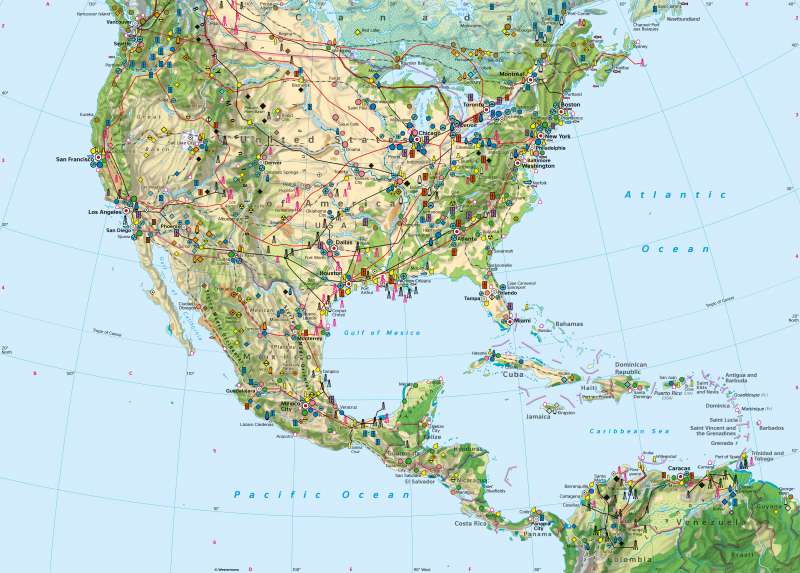United States (USA) and Middle America - Economy and land use
Economy and land use
978-3-14-100890-6 | Page 184 | Ill. 1

Overview
Four zones or belts of intensive economic activity can be identified in the USA:
- The Manufacturing Belt around Chicago and Detroit is the largest and oldest industrial region in the country. Since the 1970s, it has been affected by a strong structural change due to deindustrialisation.
- The East Coast metropolises from Boston to New York and Washington, D.C. are leading high-tech and financial locations. In addition to a diverse industry, they are home to important services.
- In the Portland/Seattle area, the high-tech and aircraft industries are strongly represented. Wood processing and paper industries are also located there, among others.
- Economic centres in the west are San Francisco with the adjacent Silicon Valley to the south (internet, software, and computer industry) and the Los Angeles/San Diego area (high-tech, heavy and light industry, services, film/media). Together with centres of mining, industrial, high-tech, and service around Phoenix, Dallas, Houston/New Orleans, Atlanta, and Florida, they form the Sunbelt, the growing region of the US economy.
Mining and industry clusters
The wealth of ores and energy resources has greatly favoured the economic development of the USA. Iron and steel production in the northern and southern Appalachians, for example, can be traced back to the proximity to raw material deposits. The locations on the Great Lakes developed largely because the required raw materials (for example iron ore from the Mesabi Range deposit on the west side of Lake Superior or from overseas) could be transported very cheaply by water. Metal-processing industries also developed there, especially the vehicle industry in the Detroit area.
The North and Central American economic area is characterised by great disparities in development. The dividing line runs between Canada and the USA on the one hand and the Latin American countries on the other. Only a few small Caribbean states reach a medium level, mostly due to tourism or their role as banking centres and tax havens.
Oil production and processing are widespread along the coast of the Gulf of Mexico (USA, Mexico) and the Caribbean Sea (mainly Venezuela), and some industries (chemicals, plastics) have settled there. The area around Mexico City and the coastal fringe of Venezuela are the only large economic agglomerations in Central America and the Caribbean.
It is striking that there are hardly any finishing and high-tech industries in Latin America. The locations near the Mexican border cities of Tijuana and Ciudad Juarez are due to the close relations with the USA. The importance of tourism is partly very high in the Caribbean (for example, Bahamas, Cuba).




